
Best Wind Scoops: How to Use Them Properly

Wind scoops are an excellent passive ventilation tool for use at anchor or when moored at the dock.
The best wind scoops are the Plastimo Ventilated Sail, the Dorcap Hatch Vent, the Breeze Booster Hatch Ventilator, the Breeze Booster Port Ventilator, and the Breeze Bandit Hatch Ventilator.
In this article, we'll cover how to use wind scoops effectively for ventilation. We'll also discuss the best situations in which to use wind scoops, and we'll feature five of the best on the market today.
This article is based on information sourced directly from wind scoop manufacturers and sailors who use wind scoops as an alternative to air conditioning.
Table of contents

What is a Wind Scoop?
Wind scoops are a lightweight and stowable alternative to air conditioning. They require no electricity, and they draw large volumes of outside air through the hatch or porthole of a sailboat.
Air scoops aren't as effective as regular air conditioning, but they're more affordable than fans, and (under the right conditions) they can provide significantly more ventilation. They're also highly compact when stowed and made of lightweight sail-like materials such as nylon and polyester.
Wind scoops are sometimes confused with deck cowls. While standard deck cowls can perform the same function, modern wind scoops are much larger and more efficient at ventilating a sailboat cabin.
How do Wind Scoops Work?
Wind scoops work the same way that traditional deck ventilators do, but on a larger scale. These large tent-like ventilators point towards the wind and channel it through the boat. Wind scoops are completely passive, and they take advantage of even the smallest breezes.
And while they're not as effective as air conditioning, they can easily add effective cooling and keep the air in your sailboat from becoming hot, stuffy, and stagnant.
How to Use a Wind Scoop Properly
Wind scoops can be somewhat tricky to use, but most people find the right alignment fast enough. The first step in using a wind scoop is to learn the circumstances in which it is most effective. Most wind scoops aren't designed to be used while underway. This is because of their lightweight construction and position on the boat. The ideal time to use a wind scoop for ventilation is when you're at anchor.
As most sailors know, an anchored sailboat will naturally turn and point into the wind, which is perfect for wind scoops. Wind scoops can also be used when in the marina as long as you orient the induction end towards the wind.
The primary purpose of a wind scoop is to simply redirect an existing breeze into and through a sailboat. The wind scoop is generally mounted over the front (forward) hatch, which must be open completely for it to be effective. This works best as it directs air from the narrowest part of the boat out into the wider spaces.
Remember that wind scoops are most effective when they move air through the boat. Since they don't actually cool the air, the best way to utilize them is to replace the existing air in the boat as often as possible. The best way to ensure that this occurs is to open the rear hatch, as it will allow the most efficient flow of air through the boat.
The same rule applies to other types of wind scoops, such as porthole scoops. In the case of larger wind scoops, you can use the companionway hatch or portholes to finely tune how much air flows through the cabin. Think of the companionway hatch as the thermostat or throttle.
Are Wind Scoops Weatherproof?
So, what should you do with your wind scoop if it rains? Many sailors ask this question, and the answer depends largely on what type of wind scoop you buy.
Standard wind scoops aren't rainproof at all. This is a problem in tropical climates, as it rains frequently, and excess moisture can easily cause mold in your cabin.
If rain is a frequent issue, consider a weatherproof wind scoop. Unlike traditional wind scoops, which are tall and thin, rain-resistant wind scoops are short, bullet-shaped, and elongated lengthwise to reduce the amount of rain that falls or blows into them. These models are also treated and waterproof, similar to a tent rainfly.
Traditional wind scoops move more air than most weatherproof models, which is why many sailors use them in tropical climates regardless. The best way to prevent rain-related problems is to be vigilant and simply close the forward hatch whenever it starts to get stormy outside.
Best Wind Scoops
There are dozens of wind scoops on the market today, including several made by the Windscoop brand. Here are the best sailboat wind scoops available today from several top marine brands.
1. Plastimo Ventilated Sail
Plastimo is a well-known manufacturer of marine ventilation equipment. If you have a newer sailboat, chances are you have a plastic ventilation cowl made by Kastimo. In addition to standard vents. Plastimo also offers a large wind scoop which they call a 'ventilated sail.'
The Plastimo wind scoop is omnidirectional, which makes it somewhat unique in the industry. That means that this wind scoop will efficiently funnel air down into the forward hatch regardless of what direction the wind is blowing.
Omnidirectional wind scoops are ideal for most situations, and they're particularly useful when you're docked at a stationary marina. The Plastimo wind scoop is shaped like a pyramid and held up by a line that usually runs up the mast. The eyelet at the top of the pyramid is ideal for attaching to a halyard, so this wind scoop is easy to deploy and requires no bulky poles or separate rigging.
The wind scoop itself is made from polyester, which is lightweight and durable. Polyester is also soft and flexible, which prevents annoying whistling and flapping sounds. The primary drawback of this design is that it isn't particularly water-resistant, and it will readily funnel rainwater down into the cabin if the hatch is left open during a rain squall.
In other weather conditions, the Plastimo wind scoop shines. Thanks to its durable stitching and halyard-hung design, it can stand up to strong wind gusts without tearing or coming off. It also fits most standard sailboat hatches.
2. ATN Dorcap Hatch Vent
Here's a unique all-weather wind scoop designed to hold up to rain, wind, and spray. The ATN Dorcap wind scoop is self-supported and fits most standard boat hatches.
The ATN Dorcap wind scoop is essentially a large stowable sea cowl designed to mount sturdily to the hatch of a sailboat. Unlike most wind scoops, this ATN model is stubby and low-profile. These design features make it resistant to water and wind gusts, as there's less of an opportunity for weather influx.
The scoop itself has rigid supports and doesn't need to be Leathered to a halyard to stay upright. It has adjustable airflow settings for maximum airflow and maximum rain protection. This air scoop features a 'dam' in the base of the inlet, which helps prevent water that runs along the deck from getting into your cabin.
Despite its small size and air dam, the ATN Dorcap wind scoop moves a remarkable amount of air through the cabin. It can be operated from inside the cabin as well, which means you won't have to scramble on deck during a rainstorm to close the hatch or disassemble the air scoop. This is ideal for anchoring in tropical and subtropical climates where heat and rain often accompany each other.
The primary disadvantage of the ATN Dorcap wind scoop is that it is not omnidirectional, and it can be tricky or impossible to reposition-,if the wind direction changes. However, at anchor, this is rarely a problem.
3. Breeze Booster Hatch Ventilator
The Breeze Booster Hatch Ventilator is the wind scoop equivalent of a supercharger, and it's well known for moving an enormous amount of air through sailboat cabins. This self-supported wind scoop is ideal for medium and large sailboats in areas where the wind is usually insufficient for other smaller wind scoops.
The Breeze Booster is a large cowl-shaped wind scoop. It is self-supported and does not require a halyard. This means that it's taut as useful on powerboats. This wind scoop is about as tall as it is wide, which allows it to efficiently harness slight winds and channel them throughout the cabin. The scoop itself is very easy to set up, and it can be oriented in any direction without much trouble. This makes it ideal for use at anchor or when docked in a marina.
Another advantage of the Breeze Booster wind scoop is that it allows sailors to adjust the hatch independently. This means that you can fine-tune the airflow from inside the boat or close the forward hatch completely in the event of a rainstorm. The scoop itself provides little protection from the elements, though it offers shade and doesn't impede the user from closing the hatch.
As far as its application is concerned, the Breeze Booster ventilated hatch is comparable to the Plastimo Ventilated Sail. It works well at anchor or in the marina, though it doesn't stand up to high winds as well as the Plastimo. That said, it's easier to set up at the expense of size.
It stows larger than the Plastimo, as it's self-supported and requires some rigid parts. The manufacturer states that, when stowed, this wind scoop takes up about the same amount of space as a traditional umbrella.
4. Breeze Booster Port Ventilator
Sometimes, a giant air scoop over the hatch isn't necessary, and an extra ventilation boost over a port will suffice. That's where the Breeze Booster Port Ventilator comes in. This smaller wind scoop is designed to mount over a traditional sailboat porthole or portlight, and it works well as an additional source of passive ventilation.
The primary advantage of the port ventilator is that it's mostly weather resistant due to its size and location on the side of the cabin. It can keep the air inside flowing even when you're not aboard, which allows you to lock up or button up your hatches. It also works well while you're on board and at anchor, as you can point it forwards towards the wind.
The Breeze Booster Port Ventilator is designed for use with inward-opening ports, which means you can adjust the airflow from the cabin or close it when it rains.
The Breeze Booster port vent air scoop is constructed of flag stock nylon, which is durable and lightweight. It also includes a screen, which is a necessity in areas with mosquitos and other insect pests. And like the standard large Breeze Booster, the port vent wind scoop is also self-supported with PVC framing.
This model is highly affordable and compact, making it a great option to start with if you're new to wind scoops.
5. Breeze Bandit Hatch Ventilator
Here's another durable wind scoop designed to stand up to gusts and windy weather. Like the Plastimo ventilated sail, the Breeze Bandit wind scoop is omnidirectional and capable of harnessing wind from all directions without adjustment.
The Breeze Bandit wind scoop is essentially four wind scoops sewn together back to back. It has four panels that harness wind from all directions simultaneously, and it channels the wind downard and into the hatch. It's tall, thin, and lightweight, making it ideal for use on sailboats.
Interestingly, the design of this four-paneled wind scoop is not new. It was rediscovered in a centuries-old British Navy manual, as similar canvas designs were once used to cool and ventilate tall ships. In other words, it's a proven and highly-effective design.
Unlike the originals, the Breeze Bandit is manufactured from durable and lightweight polyester. Like the Plastimo Ventilated Sail, polyester was chosen to provide longevity, tear-resistance, stretch-resistance, and to eliminate flapping and wind noise.
The sides of the Breeze Bandit are reinforced with 1" webbing, providing rigidity when deployed but allowing it to collapse and stow in a compact package. The webbing is also double-stitched, which provides much more durability than some competitors. The Breeze Bandit fits hatches up to 21 inches square.
It mounts at the base with stainless steel snaps, which are durable, unobtrusive, and easy to install. The Breeze Bandit rigs up with a halyard connected to an eyelet at the top, and it stands 6 feet tall when deployed.
The primary disadvantage of this design is that it's not rainproof, and you can't close the hatch while it's deployed. That said, it's easy to simply unbutton the base and close MOB the hatch in the event of foul weather.
6. Davis Instruments Windscoop
We can't forget to include name-brand wind scoops on our list. The Davis Instruments Windscoop is one of the most popular passive hatch ventilators on the market today, and it's the namesake of products in this category.
The original Windscoop rigs up like the Breeze Bandit and moves a large volume of air into the cabin. It must be pointed into the wind to work, but its tall and wide design makes it the most effective wind scoop on our list. It's also almost universally compatible with sailboat hatches and companionways. It fits any opening up to 4 feet wide, which makes it an option for sailboats such as the Catalina 30 that have unusually large and non-square forward hatches.
The original Windscoop is compatible with screens and mosquito nets, making it ideal for bug-filled areas. Installation is easy, as it doesn't require tie-downs. Simply feed it through the hatch and rig it up to a halyard.
The original Windscoop is affordable, and it makes a great addition to your standard cruising gear lineup for warm weather. Due to its quick and easy install, it's also great for clearing the cabin after cooking or working with fume-producing chemicals such as paint, varnish, stain, or epoxy.
Related Articles
Daniel Wade
I've personally had thousands of questions about sailing and sailboats over the years. As I learn and experience sailing, and the community, I share the answers that work and make sense to me, here on Life of Sailing.
by this author
Sailboat Upgrades
Most Recent

What Does "Sailing By The Lee" Mean?
October 3, 2023

The Best Sailing Schools And Programs: Reviews & Ratings
September 26, 2023
Important Legal Info
Lifeofsailing.com is a participant in the Amazon Services LLC Associates Program, an affiliate advertising program designed to provide a means for sites to earn advertising fees by advertising and linking to Amazon. This site also participates in other affiliate programs and is compensated for referring traffic and business to these companies.
Similar Posts

How To Choose The Right Sailing Instructor
August 16, 2023

Cost To Sail Around The World
May 16, 2023

Small Sailboat Sizes: A Complete Guide
October 30, 2022
Popular Posts

Best Liveaboard Catamaran Sailboats
December 28, 2023

Can a Novice Sail Around the World?
Elizabeth O'Malley
June 15, 2022

4 Best Electric Outboard Motors

How Long Did It Take The Vikings To Sail To England?

10 Best Sailboat Brands (And Why)
December 20, 2023

7 Best Places To Liveaboard A Sailboat
Get the best sailing content.
Top Rated Posts
© 2024 Life of Sailing Email: [email protected] Address: 11816 Inwood Rd #3024 Dallas, TX 75244 Disclaimer Privacy Policy
ACTIVE STORM TRACKER Hurricane and Tropical Storm Information Learn more

Service Locator
- Angler Endorsement
- Boat Towing Coverage
- Mechanical Breakdown
- Insurance Requirements in Mexico
- Agreed Hull Value
- Actual Cash Value
- Liability Only
- Insurance Payment Options
- Claims Information
- Towing Service Agreement
- Membership Plans
- Boat Show Tickets
- BoatUS Boats For Sale
- Membership Payment Options
- Consumer Affairs
- Boat Documentation Requirements
- Installation Instructions
- Shipping & Handling Information
- Contact Boat Lettering
- End User Agreement
- Frequently Asked Questions
- Vessel Documentation
- BoatUS Foundation
- Government Affairs
- Powercruisers
- Buying & Selling Advice
- Maintenance
- Tow Vehicles
- Make & Create
- Makeovers & Refitting
- Accessories
- Electronics
- Skills, Tips, Tools
- Spring Preparation
- Winterization
- Boaters’ Rights
- Environment & Clean Water
- Boat Safety
- Navigational Hazards
- Personal Safety
- Batteries & Onboard Power
- Motors, Engines, Propulsion
- Books & Movies
- Cockpit Confessions
- Communication & Etiquette
- Contests & Sweepstakes
- Colleges & Tech Schools
- Food, Drink, Entertainment
- New To Boating
- Travel & Destinations
- Watersports
- Anchors & Anchoring
- Boat Handling
Get Air Down There: How To Improve Ventilation On Any Boat
Advertisement
Good ventilation inside your boat is a must for comfort and safety. Here's how to get the cooling breeze flowing.
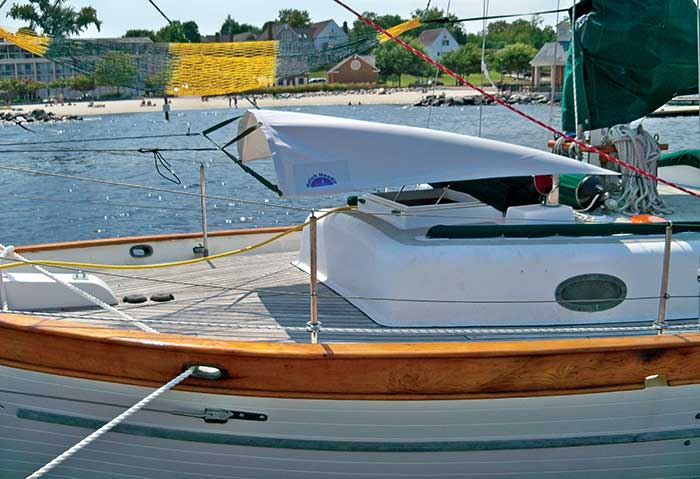
A wind chute installed over a hatch can help channel airflow below and can even keep light rain out if positioned correctly. (Photos: Fank Lanier)
Nothing enhances the quality of life belowdecks during the heat of summer, or when cruising hotter latitudes, like plenty of cool, fresh air. Good ventilation provides a multitude of benefits including preventing odors, condensation, and mold growth as well as eliminating minor carbon monoxide buildup and its negative effects on crew health (such as headaches and seasickness). Here's a look at ventilation basics and how to make them work for you.
Passive Or Active
There are two types of ventilation systems : passive and active. Passive systems rely on the wind blowing over them to move air belowdecks. They either direct air inside or exhaust it (depending on their type and orientation to the wind). Examples of passive vents include traditional cowl vents, clamshell or scoop vents, louvered hatch boards, and low-profile discs (aka mushroom vents).
Passive vents work best when installed in opposing pairs. While they can move a surprising amount of air on a breezy day, they don't perform well on days with little or no wind.
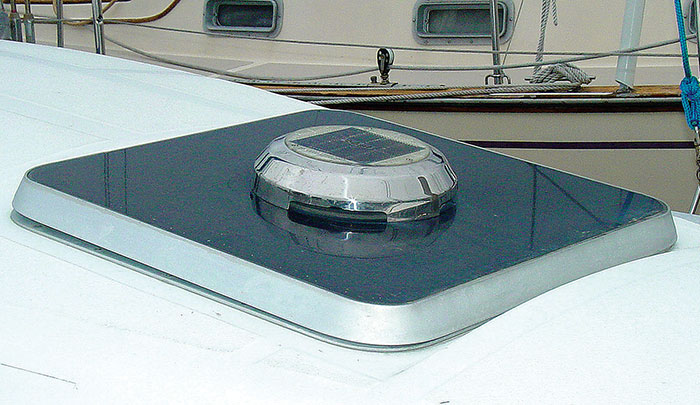
A solar-powered mushroom vent is convenient and easy to install.
Active systems are typically mushroom vents outfitted with a small electric fan installed in the vent body. Some are powered by your boat's 12V DC system; however, most are solar-powered. Many of the solar-powered units contain a rechargeable battery (to facilitate nighttime operation) as well as interchangeable fan blades, which allows them to be used as either an intake or an exhaust.
Ventilation Basics
Efficient airflow requires not only an intake, but also an exhaust. A single intake can't force air into a boat against pressure any better than a single exhaust can remove it against a vacuum.
Assuming a boat is oriented head-into-the-wind (as is typical while at anchor or on a mooring), it's pretty intuitive that opening a forward-facing hatch channels air belowdecks, much like an air ram. Conversely, an open companionway door or aft-facing hatch acts as an extractor, pulling air from belowdecks as the wind passes over it.
Adding a wind chute to your hatch provides even greater funneling ability. The same goes for portlight scoops, which help deflect those cooling breezes down below through vertical portlights.
If your boat has limited or no portlights, consider swapping out some of the “deadlights” (non-opening portlights). Portlights (which open to allow airflow) come in a wide variety of shapes, sizes, and frame materials (e.g., plastic, bronze, aluminum, stainless steel). As such, it is typically easy to find units to replace existing deadlights. When buying portlights, be sure to match the material of the new units to the remaining deadlights or existing boat hardware to prevent the nautical equivalent of an eyesore. Installing portlights , exhaust vents, or even additional hatches over cooking areas can also make a big difference in air quality belowdecks.
Boats at the dock face additional ventilation challenges as they can't orient themselves to the wind. Wind chutes can be repositioned to the sides or rear of a hatch to help funnel air belowdecks, while some traditional hatches are hinged or pinned so that they can be opened to face any of their four sides (a boon in this situation).
Other airflow challenges occur during rainy or stormy weather, which can prevent boats from leaving hatches and portlights open while in port or underway. A tarp or canvas cover rigged over a partially opened hatch keeps rain out and provides ventilation, although the airflow will be less than that of a fully opened hatch or one using a wind chute (which typically can't be used in conjunction with a tarp). The best solution here is a unit that combines the protection of a hatch awning and the functionality of a low-profile wind scoop.
How Much Is Enough?
A well-designed ventilation system should exchange the air belowdecks roughly once every hour. Let's say you have a mid-sized boat with an interior volume of around 1,400 cubic feet. Airflow ratings for passive vents range from 350 to 600 cubic feet per minute (cfm). Intake volume should equal output, so based on the above we would need a minimum of four similar sized vents (two intake, two exhaust) to provide adequate ventilation.
If using two active vents, they should be matched with two passive vents. If four passive vents are installed, they will automatically adapt to intake or exhaust mode as needed (with the exception of improperly aligned cowl vents).
Vents should be arranged to provide as much cross flow inside the cabin as possible. Passive vents should be mounted in pairs at opposite ends of the boat (to the extent possible) with one facing forward and the other facing aft, which provides an intake and exhaust, regardless of wind direction. A combination of passive and active vents provides the same effect with varying wind directions (or in the case of no wind at all).
More 'Cool' Ideas To Beat The Heat
- Use awnings, side curtains, and biminis to provide shade and reduce temperatures belowdecks during the heat of the day.
- Replace heat-producing halogen and incandescent bulbs or fixtures with cool-running LEDs.
- Avoid cooking belowdecks during the heat of the day. Plan around the heat by cooking galley meals in the morning or later in the afternoon while grilling or serving cold meal items for lunch. Barbecuing abovedecks will also keep the cabin cooler at night.
- For boats without an air conditioner, anchor out or take a mooring ball.
- End the day's run early enough so the engine won't be radiating heat well into the night.
Move It Around
While getting fresh air belowdecks is important, it's only half of the ventilation battle. In our example above, four vents may technically provide enough fresh air, however the interior will be broken up into separate cabins or compartments that can restrict airflow throughout the vessel. So simply installing the correct size and number of vents may not be enough to get the ventilation job done. Equally important is moving that fresh air into all the low ventilation spaces.
Drawers, hanging lockers, and other closed storage compartments will benefit from louvered doors or vent grilles. Just remember these spaces require a way for air to both enter and exit in order to provide good cross-ventilation.
Cabins and heads should also have some kind of ventilation installed, particularly if they can be closed off from the rest of the boat. For these and other such living areas, nothing improves ventilation like a few well-placed electric cabin fans . They make a hot bunk bearable, remove heat from the galley, and help reduce odors and keep moisture down in the head/shower area. Unlike the noisy, power-hungry units of yesteryear, today's fans are both quiet and energy-efficient.
My recommendation is that every bunk have a dedicated fan — two if needed due to size. It's almost as if just the soft whirring sound of the fan alone makes the bunk feel cooler. Although many boats suffer from less-than-ideal ventilation, improvements can be made to most any vessel fairly easily and at minimal expense. The effort spent constructing a hatch hood or installing a few fans will pay cool dividends for years to come.
Related Articles
The truth about ceramic coatings for boats.
Our editor investigates the marketing claims of consumer-grade ceramic coatings.
Fine-Tune Your Side Scan Fishfinder
Take your side-scanning fishfinder off auto mode, and you’ll be spotting your prey from afar in no time
DIY Boat Foam Decking
Closed-cell foam flooring helps make boating more comfortable. Here’s how to install it on your vessel
Click to explore related articles
Frank Lanier
Contributing Editor, BoatUS Magazine
Capt. Frank Lanier is a SAMS-accredited marine surveyor with over 40 years of experience in the marine and diving industries. He’s an author, public speaker, and multiple award-winning journalist whose articles on boat maintenance, repair, and seamanship appear regularly in numerous marine publications worldwide. Contact him via his YouTube channel “Everything Boats with Capt. Frank Lanier” or at captfklanier.com.
BoatUS Magazine Is A Benefit Of BoatUS Membership
Membership Benefits Include:
Subscription to the print version of BoatUS Magazine
4% back on purchases from West Marine stores or online at WestMarine.com
Discounts on fuel, transient slips, repairs and more at over 1,200 businesses
Deals on cruises, charters, car rentals, hotel stays and more…
All for only $25/year!
We use cookies to enhance your visit to our website and to improve your experience. By continuing to use our website, you’re agreeing to our cookie policy.
Sailing Whimsy
Adventures on a classic Pearson 35 sailboat
Monday, September 5, 2022
Installing a dorade box vent on my sailboat.
Adequate ventilation inside a sailboat's cabin is a must, whether in the hot tropics or colder climates where condensation becomes a problem. Being stuck inside a hot damp boat interior with no fresh air circulation is a miserable experience especially on passage, or even on a rainy day at anchor, when opening the portlights or top hatches is not an option.

Whimsy will have 8 opening portlights (7 on cabin sides and an aft-facing one over the galley sink) but because boats tend to point into the wind, cabin-side opening portlights are generally not as effective in promoting air flow. A forward-facing portlight is also not an option as the force of waves crashing over the bow can possibly stove-in the area, not to mention the leaks. The solution is a Dorade box vent.

Dorade vents are named after the Olin Stephens-designed sea-racing yacht Dorade built in 1929 when the Robber-Barons took up pleasure sailing, which is surprising because it seems like such a simple solution to a common problem that should have been invented much earlier: how to get air ventilation below deck without letting water in too.

A Dorade box vent basically consists of a rotating cowl that can be pointed into the wind, attached on top of a teak box that has an internal baffle, which is placed over a hole on deck. The idea is that the internal baffle will keep out most of the sea spray and rain, which drains out from the bottom of the box, while the air moves over the baffle, down the hole & into the cabin.

Getting air into the cabin is part of the deal; there also has to be adequate air exhaust routes for proper ventilation to occur. A Dorade box cowl can be pointed away from the wind too, creating negative pressure that will tend to suck air out of the cabin. This is why larger boats can have pairs of Dorade box vents: one facing fore and one facing aft, creating a continuous draft through the boat interior.

Whimsy doesn't have the deck space for two vents and won't need one because the companionway as well as the yet-to-be installed aft-facing opening portlight over the galley sink, will provide enough of a passive air exit. They will in turn be protected from rain and spray by the yet-to-be installed dodger.

Parts for this project consisted of an off-the-shelf teak Dorade box, a cowl whose base just barely fit over the box, and a ring cut off of 5"wide PVC pipe.

The cowl is the most problematic part. One of the issues with Dorade box vents, other than their primary drawback which is taking up large tracts of deck space, is that the cowl can be a nuisance, fouling lines and banging shins. Traditional Dorade box cowls are fancy highly polished, hard metal objects with sharp edges that look pretty but a jibsheet caught around a Dorade box cowl can potentially rip it right off, and I'd hate to trip onto a cowl. Traditionally the solution was to build a steel cage around the vent to prevent all that, thus taking up yet ore space and not reducing trip hazards.
Manufacturers came up with PVC cowls that are flexible enough not to foul lines and to not cut you open if you should fall on then, but the general consensus is that they don't fare well under the sun and also tend to stain, turn yellow or mildew. Vetus however has come up with soft but rigid cowls made of silicon, which supposedly fares better than PVC under the sun. I guess we'll see but the material doesn't feel floppy as I had feared. Anyway I got the biggest cowl I could find to maximize airflow: the Vetus Samoen cowl with a gaping air scoop painted red and 5"-wide opening hole on the base.
The installation of my Dorade box vent was pretty straight-forward as there aren't too many places to install one on deck. I was most concerned with making sure it did not interfere with any lines running aft to the cockpit. Then, installation was simply a matter of cutting a 5" hole on deck, and a slightly larger hole from below (for the cover plate). I went through the usual process of scooping out the balsa core material and filling the gap with epoxy filler. I had cut off about 2" length off of a 5"-wide PVC pipe to make a plastic ring; this was installed over the deck hole with about a 1" tall lip sticking up, acting as a dam to further limit water intrusion around the deck hole. Then a few coats of gel coat, and the quickly "varnished" teak box was stuck on the deck top with 3M 5200 only (I don't see any reason why it would need to be more securely fastened on deck, and additional fasteners just mean more holes for water penetration.)
To close up the Dorade box vent from below, a 5" (internal diameter) waterproof plastic deck plate was installed from the interior under the hole.
I decided to varnish the teak box. Though teak tends to be naturally weather resistant, I was concerned as the boards used to make my Dorade box were kinda thin, and so could use protection. I also like the glossy look of varnished wood. The quick-and-dirty varnish job was just two coats of epoxy (first one was Totalboat "penetrating" epoxy, as teak tends to be oily & not stick well to epoxy resin) followed by two coats of Interlux Perfection Plus to give it a glossy look, as well as to protect the epoxy from the Sun's UV. The final coat was a spray of glossy acrylic from a can with additional UV inhibitors; not strictly necessary but helped deepen the gloss.. Of course there are drips and dust specks galore; I am working in a dusty boatyard.
So, now Whimsy has pretty much maxed-out the natural ventilation options. Combined with multiple fans, there is not much else that can be done to improve ventilation below, but for a small screen on the cowl to keep out bugs.
No comments:
Post a comment.
- Accessories
- Cleaners & Waxes
- Clothing & Gifts
- Cooling Systems
- Discount Dock
- Electrical Systems
- Engine Parts
- Exhaust Systems
- Fuel Systems
- Gauges & Accessories
- Hose & Fittings
- Jet Drives & Accessories
- LS Engine Parts & Accessories
- Oil Systems
- Oil, Lubricants & Paint
- Outdrives & Accessories
- Propeller Accessories
- Safety Equipment
- Sale Specials
- Steering Systems
- Steering Wheels & Adapters
- Superchargers
- Throttles, Shifters & Controls
- Trim Indicators & Accessories
- V-Drive Components
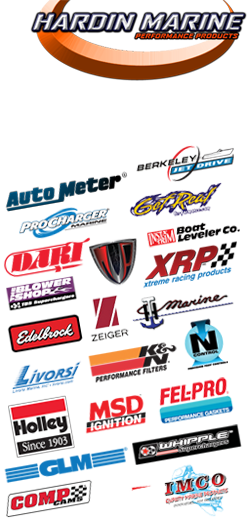
- Shipping Information
- Return Policy
- Privacy Policy
- Security Policy
- Terms & Conditions
- Dealer Information
- Your Account
- Instructions & Guides
- Mercruiser Parts Finder
- Press Release Archive
- Custom Fabrication
- New Products
- OEM Replacement Parts
- Diversified Marine Catalog
- GLM Marine Catalog
- Mallory Marine Catalog
- Mercury Marine Catalog
- SEI Marine Catalog
- U-FLEX Marine Catalog
- 1-877-900-7278
- LS Engine Parts and Accessories
- Oil, Lubricants & Paints
- Outdrives and Accessories
- Tools & Accessories
- Trim Indicators and Accessories

- Mallory / Sierra Marine Catalog
- Mayfair Marine
- Package Deals
- SEI Marine Products Catalog
- AEM Performance Electronics
- American Turbine
- ARP Fasteners
- Barnegat Light
- Berkeley Jet Drive
- Bluewater Enterprises
- Cometic Gaskets
- Competition Headers
- Corsa Performance
- Custom Marine (CMI)
- Delfino Steering Wheels
- Get Real Products
- Glenwood Marine
- Grant Steering Wheels
- Gussi Steering Wheels
- Hardin Marine
- Hi-Tek Marine
- Holley Marine
- IMCO Marine
- Isotta Steering Wheels
- K&N Engineering
- Lightning Headers
- Livorsi Marine
- Mallory / Sierra
- Marine Design Corp
- Marine Lighting Products
- Max Volt Ignition
- MSD Ignition
- Oliver Racing
- Orca Marine Cooling Systems
- Place Diverter
- Plash Marine Lighting
- Rewarder Custom Headers
- San Juan Engineering
- SEI Marine Products
- Stainless Marine
- The Blower Shop
- XRP Fittings
- Zeiger Steering
Ventilation - Solar Cabin Vents
- Back to Parent Section
| $69.95 "; $('#quantity-95982').after(message); $('#quantity-95982').attr("aria-describedby", "quantity-validation-message"); $('#quantity-95982').focus(); e.preventDefault(); } }); $('#quantity-95982').change(function () { $('#quantity-validation-message').remove(); }); }); })(adnsf$); "Keeps boat dry all year. Draft free. Allows light below. Powered by slight breeze, will automatically exhaust up to 350 cu. ft. of stale, hot or damp air from inside a closed boat. Eliminates mildew and odors. Low profile, 2-1/2" H, reducing deck clutter. Rain cannot enter even when open. Ideal for heads, galleys, forepeaks and preventing damage to interior wood cabinet work. Easily installed. Requires 4" hole. Comes with 8" protective cover." Description: Vent-O-Mate/Plastic Cover Sold: Each |
| $140.10 "; $('#quantity-95983').after(message); $('#quantity-95983').attr("aria-describedby", "quantity-validation-message"); $('#quantity-95983').focus(); e.preventDefault(); } }); $('#quantity-95983').change(function () { $('#quantity-validation-message').remove(); }); }); })(adnsf$); "Keeps boat dry all year. Draft free. Allows light below. Powered by slight breeze, will automatically exhaust up to 350 cu. ft. of stale, hot or damp air from inside a closed boat. Eliminates mildew and odors. Low profile, 2-1/2" H, reducing deck clutter. Rain cannot enter even when open. Ideal for heads, galleys, forepeaks and preventing damage to interior wood cabinet work. Easily installed. Requires 4" hole. Comes with 8" protective cover." Description: Vent-O-Mate/Stainless Steel Cover Sold: Each |
| $165.99 : White ABS, : 7" D x 1-3/4" H" : SS cover, : 7" D x 1-3/4" H" Sold: Each |
| $60.59 "; $('#quantity-95984').after(message); $('#quantity-95984').attr("aria-describedby", "quantity-validation-message"); $('#quantity-95984').focus(); e.preventDefault(); } }); $('#quantity-95984').change(function () { $('#quantity-validation-message').remove(); }); }); })(adnsf$); Size: 7" x 1 3/4" |
- About Hardin Marine |
- Privacy Policy |
- © Hardin Marine 2023. All Rights Reserved.

- New Sailboats
- Sailboats 21-30ft
- Sailboats 31-35ft
- Sailboats 36-40ft
- Sailboats Over 40ft
- Sailboats Under 21feet
- used_sailboats
- Apps and Computer Programs
- Communications
- Fishfinders
- Handheld Electronics
- Plotters MFDS Rradar
- Wind, Speed & Depth Instruments
- Anchoring Mooring
- Running Rigging
- Sails Canvas
- Standing Rigging
- Diesel Engines
- Off Grid Energy
- Cleaning Waxing
- DIY Projects
- Repair, Tools & Materials
- Spare Parts
- Tools & Gadgets
- Cabin Comfort
- Ventilation
- Footwear Apparel
- Foul Weather Gear
- Mailport & PS Advisor
- Inside Practical Sailor Blog
- Activate My Web Access
- Reset Password
- Customer Service

- Free Newsletter

Blue Jacket 40 Used Boat Review

Catalina 270 vs. The Beneteau First 265 Used Boat Match-Up

Ericson 41 Used Boat Review

Mason 33 Used Boat Review

How to Create a Bullet-Proof VHF/SSB Backup

Tips From A First “Sail” on the ICW

Tillerpilot Tips and Safety Cautions

Best Crimpers and Strippers for Fixing Marine Electrical Connectors

Polyester vs. Nylon Rode

Getting the Most Out of Older Sails

How (Not) to Tie Your Boat to a Dock

Stopping Mainsheet Twist

Fuel Lift Pump: Easy DIY Diesel Fuel System Diagnostic and Repair

Ensuring Safe Shorepower

Sinking? Check Your Stuffing Box


What Do You Do With Old Fiberglass Boats?

Boat Repairs for the Technically Illiterate

Boat Maintenance for the Technically Illiterate

Whats the Best Way to Restore Clear Plastic Windows?

Stopping Holding-tank Odors

Giving Bugs the Big Goodbye

Galley Gadgets for the Cruising Sailor

The Rain Catcher’s Guide

Sailing Gear for Kids

What’s the Best Sunscreen?

UV Clothing: Is It Worth the Hype?

Preparing Yourself for Solo Sailing

R. Tucker Thompson Tall Ship Youth Voyage

On Watch: This 60-Year-Old Hinckley Pilot 35 is Also a Working…

On Watch: America’s Cup

On Watch: All Eyes on Europe Sail Racing

Dear Readers
- Belowdecks & Amenities
Feeling the Breeze
Practical sailor tech editor drew frye compares ventilation options for mid-size cruising boat..

There are really three reasons we ventilate; in summer to beat the heat, in the off-season to fight moisture build up from cooking and breathing, and when we are away from the boat to prevent mildew. Catalogs are full of cowls, breeze boosters, bug nets, and powered vents, all guaranteed to solve your problem. And we’ve reviewed them before. In August 2000, Practical Sailor looked at passive and powered vents, as well as a fabric breeze booster that doubled the flow through an open hatch.
But we didn’t quantify the air flow or investigate how location and wind angle affected the performance of passive vents, such as cowls and low profile vents. Sure, they probably perform as advertised on a flat, unobstructed deck, with the wind from straight ahead, but what about the real world of turbulent airflow and the wind blowing from other directions while at the dock? And how much does a bug screen or dorade box reduce the flow? You want to know these things before you start drilling big holes in the deck.
How We Tested
We started testing on various boats, but quickly realized we couldn’t control the wind speed, direction, or geometry. So we built a replica plywood cabin trunk to which we fitted hatches, cowls, dorade boxes, and low profile ventilators in a variety of locations. We created a wind tunnel by arranging a stack of five box fans 20 feet away to create a reasonably even wind field. Anemometer windspeed measurements around the replica cabin confirmed that airflow patterns matched those predicted by theory. Relative pressure was judged by measuring flow through a plain hole at these locations.
First we measured the flow through each vent type using an anemometer, with the wind from dead ahead. Vents were rotated through different positions on the cabin replica to determine the effect of changes in local pressure differential and turbulence. We then rotated the cabin relative to the airflow to simulate wind from a variety of angles, representative of sailing to windward or secured in a slip. We then added a dorade box under the cowl vent in several locations and wind directions, and added bug screens to see how much they reduced the flow.
Observations
Cooling and dehumidification are two different things. For cooling a sweaty crewmember, nothing beats air directed against the skin. Because it scrubs away the boundary layer of air and thus increases evaporation and heat transfer, it feels cooler than a vent pulling the same volume of air away as exhaust. Dehumidification to prevent mold, on the other hand, depends only on changing enough air to keep the interior in rough equilibrium with its surroundings.
Exhaust. Air must have somewhere to go. This may seem self-evident, but it bears reminding that it is equally as important to plan for exhaust as for intakes. When we are on board the companionway is generally open or at least cracked, providing exhaust or intake according to the wind direction, but when we button the boat up to go home, ventilation can suffer. Some companionways have louvers and some have openings or leaky weather stripping around the slider, but some do not.
Pressure balance. We were a little surprised by how strongly the exact position of a vent on the cabin top influenced flow. A passive vent installed in a negative pressure area will exhaust, but move it just a few feet to a positive pressure area it becomes an intake. Located in a turbulent area there may be no flow.
This can also change when the wind direction changes. A forward-facing cowl always produced at least a weak intake, but in a low pressure area, we would get even stronger exhaust flow if we took it off. This balance is far more important than the brand or any design detail. See “Pressure Differential and Impacts on Air Flow” sidebar.
Lack of wind. Wind really doesn’t blow much in the harbor . Even with a nice 10-15 knots sailing breeze on the bay, the wind in the slip, at deck- level (the masthead doesn’t count) was seldom more than 5 knots. Sure, there were also days when it touched 30 knots, but the mold will happily grow on windless days and wait through the breezy ones. You need ventilation that functions in light winds. Preventing mold typically requires at least one air change per hour, or 700-1800 cubic foot per hour (CFH) for boats from 25-40 feet.

We started testing on the boats, but quickly realized we couldn’t control the wind speed, direction, or geometry. So we built a replica plywood cabin trunk to which we could fitted hatches, cowls, dorade boxes, and low profile ventilators in a variety of locations.

We created an improvised wind tunnel by arranging a stack of five box fans 20 feet away to create a reasonably even wind field. Wind-speed readings taken with an anemometer at various points around the replica cabin confirmed that airflow patterns matched those predicted by theory. Relative pressure was judged by flow through a plain hole at these locations.
Bilge air. Ventilate the bilge, and make darn sure it is always exhausted. It stands to reason, the worst air on the boat is in the bilge. It is damp and potentially diesel-laden. Strangely, few boats are set up to draw air directly from the bilge. There may be a few louvers, but not any real draft.
Cowls and dorade boxes. Cowl vents usually have a water trap, which is traditionally provided via a dorade box. Our test dorade box and internal baffle (12-inches long, 6-inches wide, 5-inches tall, with 3-inch baffle) restricted air flow about 30 percent. However, the overall effect is often increased flow, because the box elevates the cowl above deck turbulence. The cowl vents with built-in dorade boxes tend to be less efficient because the smaller box creates an additional 10 percent wind flow resistance and does not elevate the cowl as far. Every vent should be closable for severe weather. Rotating the cowl just 30-degrees away from the wind can decrease flow by 60-80 percent.
Screens. Cruising boats seek out places beyond the reach of flying bugs, so for maximum ventilation all screens should be removable. Standard window screen reduces flow about 30 percent, and no-see-um screen cuts flow by about 48 percent.
Day vs. Night. Best practices for ventilation varies with ambient temperature and humidity, which changes with each diurnal shift from day to night. When it comes to powered exhaust/intake vents, there is some debate over their best use during the day and night (see adjacent story, “Which Dries Faster”).
Weatherproofing. The intake must be protected from rain. If air is drawn in using a powered vent, the airflow can suck rain in through plain louvers. Larger louver openings help by reducing velocity. Dodgers really help with ventilation, not just underway and at anchor, but also at the dock by allowing increased companionway ventilation.
Ventilation, Day or Night
Vent manufacturer, Vetus has strong feelings about ventilators. It uses mushrooms in its low-profile ventilators, but maintains that domed ventilators should not be closable, in order to keep the inside and outside temperature and humidity the same and thus prevent condensation.
As the Vetus catalog states: “Ventilators powered by solar cells are, in our opinion, not useful since they start operating when it gets warmer during sunshine hours when the air can absorb more vapor. They should, in fact, operate at night when the air is cooler and condensation takes place, but they don’t do that.”
Another leading manufacturer of marine vents, Nicro, takes a different approach. Nicro makes seven different domed ventilators, six of which have fans powered by 12V, solar, or solar plus Ni-Cads, in two sizes (3- and 4-inches diameter) with plastic (white or black) or stainless steel covers.
So what do we do with powered vents? We’ve experimented with dehumidifiers and they are far more efficient when run at night than during the day because temperatures are lower at night, and the humidity is higher. The exception, of course, is in the winter when ice may build at night if temperatures fall below 50F.
So yes, ventilation purely for dehumidification is more important at night than during the day, and a solar-only system may not be optimum, particularly in humid, low wind locations.
The solution? Install either multiple cowl vents, which can move air even in lighter winds, or select a powered ventilator that also has nighttime capability.
We can use the suction on the lee side of a sail to pull the boat forward. In the same fashion, we can use pressure differentials surrounding the cabin to ventilate the cabin. Thus, understanding the flow over the cabin and the pressure differential it creates is vital to the success of any passive ventilation scheme. It also explains why some passive ventilation methods did so poorly in our testing.
The cabin top has a number of pressure zones, and these change, depending on the wind direction. At anchor, the front of the cabin is high pressure, the top slightly reduced, but this depends on the location; it is lowest just behind the front edge, slowly rising to neutral depending on the extent of turbulence. The companionway area has the lowest pressure; open a hole anywhere forward and air will be sucked out the companionway, through gaps in the weather stripping if it’s closed.
Air flow through vents can be interrupted not just by insufficient pressure differential, but also turbulence. Cabin edges, masts, changes in wind direction, and even other cowls can dramatically reduce the wind speed striking the cowl.
The most complicated case is at the dock, with everything buttoned up to go home. The wind can blow from any direction, and depending on the extent of protection afforded by the harbor and neighboring boats, it will be light most of the time. Passive vents are often rated at 10 knots, but the true wind, at deck level, in most marinas is less than 5 knots 90 percent of the time.

- Cowl vents on top of dorade vents reach up above disturbed air flow to capture air in what would otherwise be a ‘dead’ zone with very little flow. Notice the need for powered vents astern to ensure any significant ventilation.

- In the same location disturbed by turbulence in a bow-on wind, a low-profile Nicro Mini-Vent 500 may produce very little ventilation flow. However, the same vent exposed to wind-flow across the bow will be effective.
Nicro 500 air Vent
This flying-saucer shaped vent is basically a low-profile dorade box that stop rain, and when sealed, keep out green water during heavy going. We had a pair of these on the bows of a performance cat for many years, and they didn’t break, snag, or leak. If placed in a turbulent or neutral pressure location, these may produce no exhaust flow at all. Compared to a plain hole in the cabin roof, we found the Nicro 500 reduces flow by about 50 percent.
Bottom line: These are not effective ventilators, but are suitable for intake or exhaust when paired with powered fans or cowl ventilators.
Nicro Standard Cowl Vent
A traditional cowl design, this vent must be paired with a dorade box or replaced with blank plugs when it is not in use. Unless protected by a cage, the tall shape is perfect for snagging lines and even getting pulled off and tossed into the ocean. And they take up locker space when not mounted. That said, the design has been around for so long because it works.
Bottom line: Recommended if paired with a dorade box.
Cabin Ventillation
| MANUFACTURER | PRODUCT | VENT SIZE | LOCATION | DIRECT FLOW CFH* (%CHANGE IN FLOW RATE) | PRICE |
|---|---|---|---|---|---|
| ACCESS HATCH | Davis | 4" x 4" sq. | Cabin forward bulkhead | 1,751 CFH | 16 |
| CABINTOP HATCH | Bomar (hatch open 60 degrees) | 16"x16" sq. | Cabintop hatch | 14,500 CFH | 430 |
| DAVIS INSTRUMENT | Wind Scoop (hatch fully open) | 16"x16" sq. | Over cabin top hatch | 28,000 CFH | 65 |
| NICRO | Low profile cowl | 3' dia. | Top of cabin, forward | 1,592 CFH | 59 |
| NICRO | Low profile cowl | 3' dia. | Top of cabin, aft | 1,326 CFH | 59 |
| NICRO | Low profile cowl | 3' dia. | Top of cabin, forward with DIY dorade box | 1,990 CFH | 59 |
| NICRO | Low profile cowl | 3' dia. | Top of cabin, forward with DIY dorade box | 2,938 CFH | 89 |
| NICRO | Standard cowl | 3' dia. | Top of cabin, forward | -448 CFH | 115 |
| DIY DORADE (NO COWL) | Air Vent 500 | No cowl | Top of cabin, forward | - 584 CFH | ~$15 |
| DIY DORADE (W/MATCHING COWL) | Dorade box 12"x 6"x5" (LWH) with 3' baffle | To fit | Flow increase applies to all locations | (+25 percent) | ~$15 |
| INTEGRATED FIBERGLASS DORADE | Dorade box 12"x 6"x5' (LWH) with 3' baffle | To fit | Flow increase applies to all locations | (-31 percent) | ~$100 |
| GENERIC SCREEN | #16 mesh window screen | To fit | Flow increase applies to all locations | (-30 percent) | NA |
| PHIFFER | Phifertex | To fit | Flow increase applies to all locations | (-62 percent) | NA |
| PHIFFER | No-see-um Screen | To fit | Flow increase applies to all locations | (-44 percent) | NA |
| POWERED VENTS | |||||
| MARINCO | Day-Night Solar Vent | 3" dia. | All | -500 CFH | 220 |
| NICRO | Solar Mini-Vent 1000 | 3" dia. | All | -700 CFH | 110 |
Nicro Low Profile Cowl
Experience tells us that low profile cowls are just as likely to snag a line as traditional cowl vents. Even though the opening and flow area is approximately the same as the traditional design, capacity is considerably less because it sits closer to the deck in disturbed air, and because the flow path is less efficient. They look modern, but they just are not as effective.
Bottom line: Traditional cowl vents are a better choice.
Davis Breeze Booster
The standard answer for cooling at anchor is a big open hatch. The downside is that you will be up closing hatches every time it rains and you won’t be able to use it underway in a breeze because of spray and even green water. Genoa sheets can catch, often damaging the hatch. Each sleeping compartment should have a hatch large enough to serve for egress in an emergency (and just hope you didn’t strap the dinghy on top of it).
In the past, we’ve evaluated several products like the ATN Doorcap, designed to enhance flow and keep water out (see PS May 2015, “Gear Fit for Summer Sailing”). However, we’ve found the best performers—especially in light winds—to be the taller, lighter wind-scoops like the Davis Breeze Booster.
The Breeze Booster’s lightweight fabric helps push a lot of air through the boat. In light winds, it typically doubles the airflow. Downsides include funneling twice as much rain below, long set-up time, vulnerability in squalls, and instability in cross winds at dock. (The Dorcap solves many of those issues.)
Bottom line: Our Best Choice for use at anchor in light wind areas.
A basic powered vent, the Nicro 1000 moves a steady 700 CFH out of the cabin during the day. Lacking a battery, it stops when the sun goes down, which is arguably the wrong time to stop (there is more water in the air during the day than at night). On the other hand, we’ve had them for years and they work, independent of wind direction. An air inlet must be provided. Includes standard insect screen. Built-in baffles block rain and can be closed to block green water.
Bottom line: Recommended for basic at-dock ventilation.
Sometimes a simple twist of a cowl or a change in the type of vent you use in certain locations will noticeably improve air flow below decks.
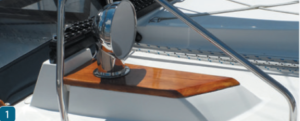
- Protective line-guards can quickly earn their keep. We’ve lost to cowls overboard, and sheets that snag during tacks are dangerous.
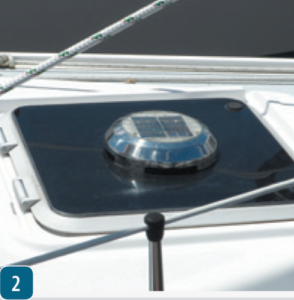
- By placing the ventilator in the hatch, one less hole is needed and the deck remains clear. Unfortunately, it blocks light and introduces potential leaks.
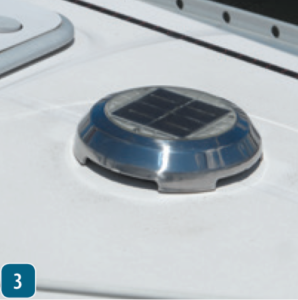
- Marinco Day/Night Plus vent moves air 24 hours per day, keeping the interior air temperature and humidity in equilibrium with the outside.
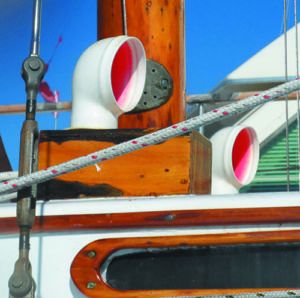
- Dorade boxes need not be fancy. It’s just a box with a baffle and perimeter water drains.

- Our test shows that airflow through cowls drops by 65 to 80 percent if they don’t face the wind. On unattended boats that are stored in marinas with variable winds, you can point the cowls in four different directions to maximize flow.
Marinco Day/Night Plus Vent
This vent includes a battery to provide 24-hour operation, which means it moves twice as much air for the same rating and pulls in drier nighttime air as well. Includes an insect screen. Built-in baffles block rain and can be closed to block green water.
Bottom line: Solar vents backed by batteries for night are the Best Choice for ventilating unattended boats.
Conclusions
Cowls mounted on dorade boxes and a cracked companionway offer smart ventilation for a boat underway. In fair weather, hatches are the big movers.
Location is everything. Intakes should be in clear air and elevating them on dorade boxes helps. Exhausts should be in low-pressure areas. Because the wind direction varies both underway and at dock, passive intakes and exhausts can both fail or reverse rather unpredictably. At the dock, powered ventilators are the only reliable air movers for mildew prevention.
Snagging can be a nightmare. Protective cages are a smart plan.
If you don’t like active systems, then four cowl vents will give dependable flow. At the dock, you can vary their opening direction by 90 degrees to capture wind from all directions.
And don’t forget bilges and the far ends of the boat. A bilge deserves its own vent and the far ends are a crap shoot for passive ventilators.
RELATED ARTICLES MORE FROM AUTHOR
Thanks I found a upright ac/dehumidifier to work well. With windows covering.
Btw I’m looking for a real good dinghy for my 33 Egg Harbor. With 12ft stern and swim platform. Two dogs must visit shore.
I like to row. But might carry a Torquedo electric.
Cruise Lake Superior mostly.
I think Vetus is incorrect on on daytime ventilation and I don’t think it’s valid to compare dehumidifier operations to ventilation. As the author mentions, dehumidifiers work best at night when the cooler air is more saturated. But ventilation is different because it is not working on the air sealed in the cabin, it is exchanging outside and inside air, ideally drawing in drier air and exhausting more humid air. So, if it matters, I think daytime would be the best time to ventilate, because you’ll be drawing in dry air. Ventilate at night and you are drawing in moist air. Now if you have a source of humidity in your boat (people, water leaks, etc), which will continually keep the indoor humidity levels higher than the outdoors, it’s probably useful to ventilate at any/all time(s) of the day.
That’s my theory anyway, maybe this is a future test.
The day night question is counter intuitive as we are talking relative humidity vs total humidity. I am not an expert, but the theory is, that although relative humidity is lower during the day, the actual water content is lower at night even though it feels more humid. So if you fill the boat with night air, then raise the temperature during the day while not ventilating, then the boat will actually be dryer all day. In practice I like a day night battery solar vent. I am considering installing a battery with its own solar source and vetus vent12 continuous fans, as my luck with Nicro has been poor in recent years.
Thanks Drew, very interesting. A couple of thoughts regarding dorade boxes: a ball can be added to the baffle, working on the same principle as the pingpong ball in early snorkels, the ball floats and blocks the air and water flow when the cowl takes a wave. We found that very successful. Also be aware when using multiple cowls that they must not be interconnected lest the high pressure at one vents straight out of another. Long ago I came to the conclusion that the larger the dorade box volume the better the airflow. Sometimes deck lockers, anchor compartments and the like, which self drain, can be utilised to perform the services of a purpose build dorade box.
At the dock when the boat is closed up, I have AC electric fans running continuously to move air. I have Nicro solar vents in cabin hatches where one sucks air in and the other exhausts. I can run DC fans when away from the dock if needed. I have a CSY 44 center cockpit with numerous deck hatches. I had dorades in my Jeanneau that were worthless
I agree with Vetus that vents should be closable from the inside. If in heavy seas or if it is raining, not so convenient to replace vent with a plate. If not on boat, you will come back with water all over the place. Nice for your varnished bulkheads. Often I just use duct tape on my Nicro solar vent to keep water out.
For my two Dorade boxes, I have installed inexpensive computer fans – exhaust in head and into the boat for the other box. Draws very little power and I tend to keep running a lot of the time.
LEAVE A REPLY Cancel reply
Log in to leave a comment
Latest Videos

Cabo Rico 34 Boat Review

Super Shallow Draft Sailboat: The Leeboard Sharpie

Hans Christian 41T – Boat Review

Seven dead after superyacht sinks off Sicily. Was the crew at...
Latest sailboat review.

- Privacy Policy
- Do Not Sell My Personal Information
- Online Account Activation
- Privacy Manager

- EU STORE, IRELAND BASED | WORLDWIDE SHIPPING | FREE DELIVERY TO IRL & NI FOR ORDERS OVER €80

Vents & Ventilation
- CABIN & GALLEY
Plastimo, Roca, Jabsco, Rule and Sowester deck, cabin and door vents, including electric blowers for yacht, boats and caravans.

Lewmar Retro Fit Vent

Roca Plastic Vent 100 x 200mm - White 480804

Roca Stainless Louvred Vent 127mm x 115mm Model 481390

Roca Stainless Louvred Vent 127mm x 67mm Model 481380

Roca Stainless 5 Slot Louvred Vent - 325 x 112mm 481291

Roca Stainless Double Grid Louvred Vent 232mm x 115mm 481400

Sowester Clamshell Vent Stainless Steel

Star brite Tea Tree Gel Tub - 227ml

Star brite Tea Tree Oil Spray - 473ml

Nuova Rade White Plastic Vent 92 x 92mm

Plastimo Mushroom Vent - 148mm Overall Diameter

Plastimo Plastic Solar Vent - 216mm Overall Diameter

Plastimo Cool'n Dry Dorade Vent - Blue 47824

Plastimo Streamlined Dorade Box - White

Plastimo Omni-Directional Wind Ventilation Scoop

Plastimo Rod-Rigged Standard Wind Ventilation Scoop

Plastimo Dorade Ventilation Box

Plastimo Cowl Vent L14cm - Red
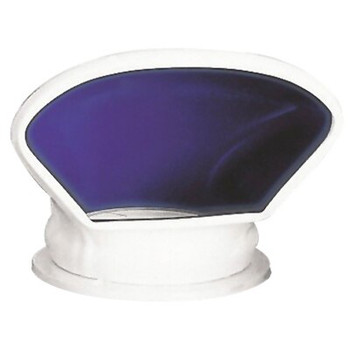
Plastimo Spare Cowl Vent - Blue

Roca Shell Vent S/S - 135mm x 110mm

Roca Polar Mushroom Vent - Plastic

Spare Base and Cap for Plastimo Vents - Ø 75mm

Spare Base and Cap for Plastimo Vents - Ø 90mm

Marinco Day/Night Solar Vent - 4" Stainless Steel
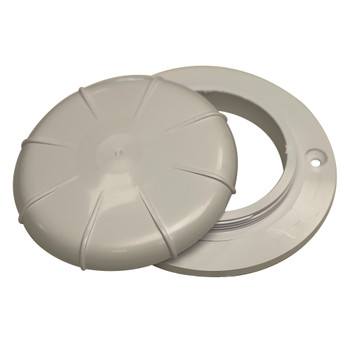
Spare Base & Cap for Plastimo Vents 12809 - Ø 75mm

- Nautic House Marsh Rd Skibbereen Co. Cork Ireland P81 R230
- Call us on 021 4315700
About CH Marine
- Stores & Hours
- About Xtra Loyalty
- Join Xtra Loyalty
- Xtra Dashboard
Customer Service
- Brexit Notes
- Privacy Policy
- Returns Policy
- Terms & Conditions
- Shipping & Delivery Times
- Gift Certificates
- WEEE Recycling
Popular Brands
- International
- See all brands here
- Subscribe to our newsletter


September Sale
- Search for:
No products in the basket.
- Base Layers
- Technical T-Shirts
- Sailing Jackets
- Sailing Trousers
- Dinghy Footwear
- Sweatshirts
- Holebrook Samples
- Pelle Samples
- Changing Robes
- Cleaners & Proofers
- Scarves / Snood
- Dinghy Equipment
- Hi-fits / Trousers
- Hiking Equipment
- Hiking Shorts
- Spray Tops / Smocks
- Full Wetsuits
- Shorty Wetsuits
- Long John Wetsuits
- Wetsuit Tops
- Wetsuit Shorts & Trousers
- Summer Wetsuits
- Winter Wetsuits
- Children’s Wetsuits
- Men’s Wetsuits
- Women's Wetsuits
- Wetsuit Sale
- Technical Clothing
- Casual Clothing
- Hats, Gloves, Socks & Scarves
- Watersports
- Accessories Sale
- Amazing Bundle Deals
- Cables & Accessories
- Fixed GPS/plotters
- GPS Antennas
- Handheld GPS/Plotters
- Marine Cameras
- Mounting/Brackets
- Radar Scanners
- Sailing Watches
- Thermal Cameras
- Waterproof Cases
- Accessories
- Fish Finder Sonar
- Depth Instruments
- Multifunction Systems
- Speed Instruments
- Weather Instruments
- Wind Instruments
- Autopilot Accessories
- Cockpit Autopilots
- Onboard Autopilots
- Navigation Charts
- Plotting Aids
- Entertainment Accessories
- Entertainment Systems
- Speakers & Subs
- Electronics
- 4G and WIFI
- Handheld VHF Radio
- Mounted VHF Radio
- VHF Antennas
- Walkie Talkies
- Buoyancy Aids
- Lifejackets
- Children’s Life Jackets
- Commercial Lifejackets
- Harnesses/Bosuns Chair
- Lifejacket Accessories
- Safety Knives
- Safety Lights
- Safety Lines
- PLB & AIS
- Satellite Communicators
- Fire Safety Stick
- Fire Extinguishers
- GPS Tracker
- Liferaft Accessories
- Recovery Devices
- Survival Suit
- Cones & Balls
- Dye Markers
- Horns & Whistles
- RADAR Reflectors
- Bungs & Bailers
- Battery Management
- Chargers & Alternators
- Electrical Other
- Leisure Batteries
- Plugs & Connectors
- Shore Power
- Wind Generator
- USB & Phone Chargers
- Blocks & Terminals
- Circuit Breakers
- Seals / Outlets / Plugs
- Switches & Panels
- Wires & Cables
- Deck Lights
- Interior Lighting
- Navigation Lights
- Searchlights
- Head Torches
- Freshwater Pumps
- Macerator Pumps
- Service Kits
- Toilets/Waste
- Spray Guns & Connectors
- Toilet Accessories
- Toilet Parts
- Waste Tanks
- Ball Valves
- Inlet & Skin Fittings
- Metal Plumbing Fittings
- Plastic Plumbing Fittings
- Diverter Valves
- Non Return Valves
- Deionised Water
- Filters & Purification
- Taps & Sinks
- Water Heaters
- Water Tanks
- Gas Connectors
- Gas Fittings
- Bow Thruster
- Bungs And Self Bailers
- Cleats and Fairleads
- Deck Filler
- Deck Flooring & Protection
- Eye Bolts & U Bolts
- Grab Rail / Handles
- Hooks and Clips
- Latches & Catches
- Shackles & Swivels
- Tiller Extenders & Joints
- Track & Cars
- Winch Handles
- Fans & Windscoops
- Hatch & Inspection Covers
- Hatch Shades
- Hatches & Portlights
- Plastic Hatches
- Yacht / Keelboat Rope
- Dinghy Rope
- Dockline / Mooring Rope
- General Purpose Rope
- Watersports Rope
- Fender Rope
- Rope Accessories
- Furling & Reefing
- Mast, Spars & Sails
- Pins & Rings
- Rigging Screws, Adjusters & Tensioners
- Splicing & Whipping
- Thimbles & Stoppers
- Galvanising Paints
- Thinners & Solvents
- Paint Brushes
- Glue & Adhesives
- Mixing Pots & Accessories
- Resins & Epoxy
- Sealants & Caulking
- Boat Cleaner
- Cleaning Equipment
- Fabric Cleaners & Proofers
- General Cleaners
- Metal Cleaners
- Onboard Cleaner
- Polishes & Waxes
- Vinyl Cleaner
- Teak Cleaner
- All Zinc Anodes
- Zinc Shaft / Prop
- Zinc Engine / Outdrive
- All Aluminium Anodes
- Aluminium Hull
- Aluminium Shaft / Prop
- Aluminium Engine / Outdrive
- All Magnesium Anodes
- Magnesium Hull
- Magnesium Shaft / Prop
- Magnesium Engine / Outdrive
- Bow Thruster Anodes
- Hanging Anodes
- Bolts & Fixings
- Backing Pads
- Lubricants & Grease
- Power Tools
- Marine Prepacks
- Dehumidifiers
- Blowers & Exhaust
- Engine Oil & Additives
- Oil Extractors & Filters
- Shaft Bearings
- Pumps & Inflation
- Tender Accessories
- Petrol Engines
- Boat Fender
- Dock Fender
- Edging Strip
- Hooks & Pumps
- Mooring Buoy
- Step Fenders
- Anchor Bags
- Anchor Connectors
- Anchor Lines
- Anchor Windlass
- Compensators
- Personal Craft
- Engine Covers
- Fuel Tanks & Lines
- Fuel Connectors
- Kill Switches
- Propeller Bags
- Straps & Ratchets
- Flag Staff & Holder
- Lighters & Matches
- Cabinet Fridges
- Cooling Kits
- Portable Fridge/freezers
- Chandlery Misc
- Cup Holders
- Sail Knives
- Seats & Cushions
- Games & Toys
- Gift Vouchers
- Nautical Gifts
- Novelty Hats
- Anemometers
- Clocks & Barometers
- Teak Fittings
- Weather Stations
- Galley Equipment
- Tumblers & Glasses
- Water Bottles & Flask
- Inflatable Paddleboards
- Hard Paddleboards
- Inflatable Kayaks
- Handles / Bridles
- Throw Lines
- Swim Accessories
- Sea Scooter
- Free Delivery on UK mainland orders over £100 excl. Highlands / rural areas
FREE Next Working Day or Saturday delivery on orders over £150 - Choose option in basket (UK mainland, excludes Highlands rural areas, order before 3pm. Saturday delivery option available from 3PM Thursdays.)
Showing all 33 results
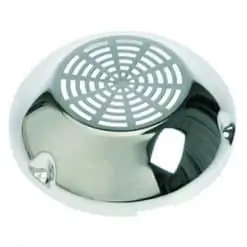
Ventilator Complete Stainless Steel 200 X 86mm
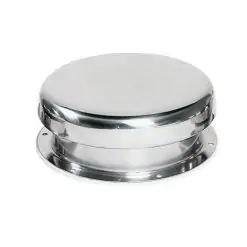
Vetus Athos Mushroom Ventilator

AAA Solar Powered Ventilator
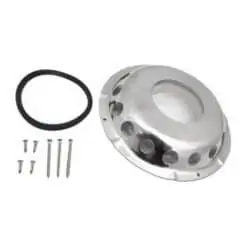
AAA Ventilator
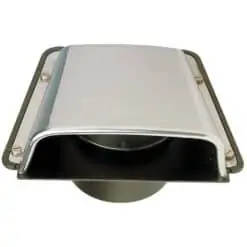
Vetus Scirocco Shell Ventilator
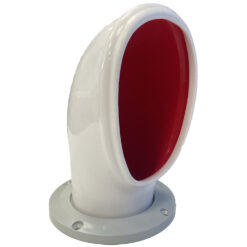
Vetus Cowl Ventilator Libec

AAA Solar Powered Vent With Battery

Plastimo Cool’N Dry Dorade – 210mm – Blue
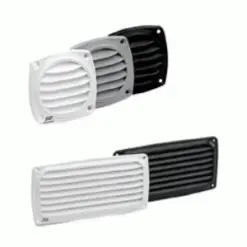
Plastimo Vents
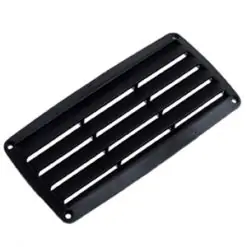
Ventilator 200 X 100mm
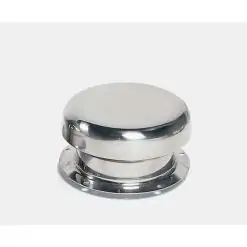
Vetus Portos Mushroom Ventilator
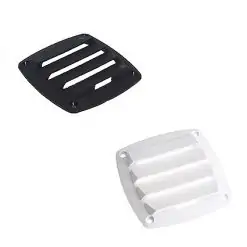
Roca Louvred Ventilator
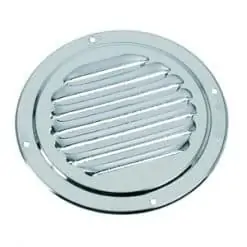
Ventilator Louvre Round Vent Electro Polished
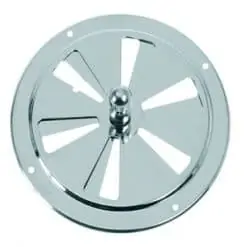
Butterfly Vent Stainless Steel
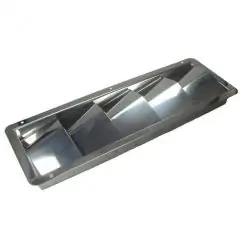
Vent Stainless Steel 5 Slot
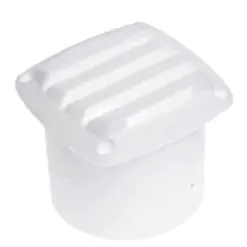
Louvred Tube Vent
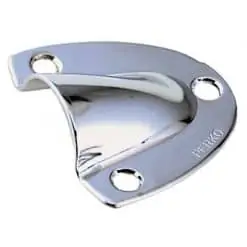
Perko Clamshell Vent
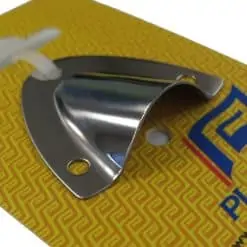
Plastimo Clam Shell Vent
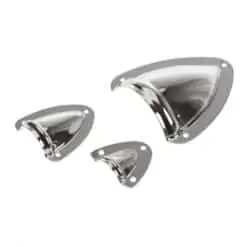
Midget Ventilator
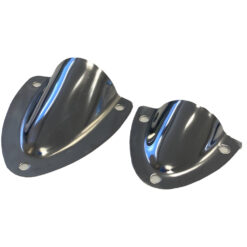
AAA Shell Vent
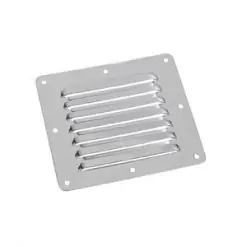
Louvrent Vent Stainless Steel
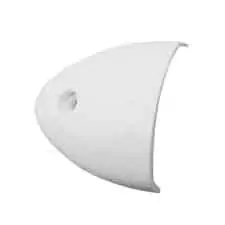
Clam Shell Ventilation Vent For Boats
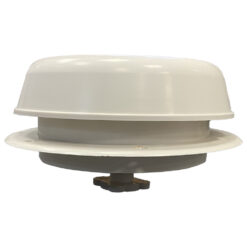
AAA Mushroom Vent
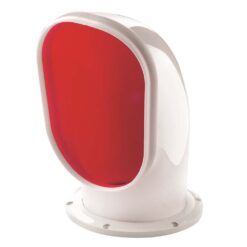
Vetus Cowl Samoens Ventilator

Vetus Cowl Ventilator Chinook

Mushroom Ventilator Plastic
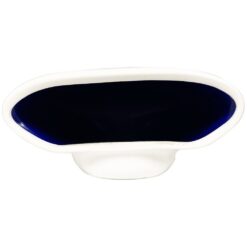
Plastimo Replacement Cowl For 16922

Ventilator 100mm High Pvc
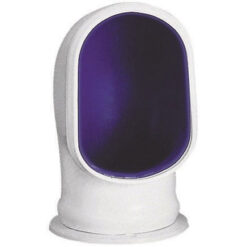
Plastimo Pvc Vent 80mm
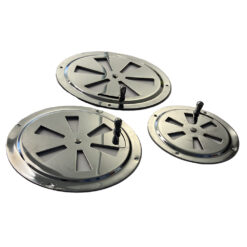
AAA Butterfly Vent

AAA Vent Liner
Username or email address *
Password *
Remember me Log in
Lost your password?
Email address *
A password will be sent to your email address.
JavaScript seems to be disabled in your browser. For the best experience on our site, be sure to turn on Javascript in your browser.

- Create an Account
- Cabin and Galley
- Boat Ventilation
Marine Vents

- Marine Bilge Blowers 1 item
- Deck and Boat Hatches 1 item
- Boat Deck Plates 3 items
- Marine Vents 8 items
- Boat Hatch Accessories 3 items
- Gas Springs 5 items
- Marine Ventilation Hoses 1 item

Please verify you are a human
Access to this page has been denied because we believe you are using automation tools to browse the website.
This may happen as a result of the following:
- Javascript is disabled or blocked by an extension (ad blockers for example)
- Your browser does not support cookies
Please make sure that Javascript and cookies are enabled on your browser and that you are not blocking them from loading.
Reference ID: 445c1025-74f5-11ef-9966-974a26f70417
Powered by PerimeterX , Inc.

IMAGES
VIDEO
COMMENTS
Wind scoops are an excellent passive ventilation tool for use at anchor or when moored at the dock. The best wind scoops are the Plastimo Ventilated Sail, the Dorcap Hatch Vent, the Breeze Booster Hatch Ventilator, the Breeze Booster Port Ventilator, and the Breeze Bandit Hatch Ventilator. In this article, we'll cover how to use wind scoops ...
Boat Vents Cover your boat cabin's vents and duct openings with quality discount marine vent parts from Great Lakes Skipper's vast inventory. We carry boat locker ventilators, boat blower vent covers, hose vent covers, round vents, square vents, and 12v boat ventilator fans from makers like Perko, Tracker Marine, Dometic, Norcold, ITC, Oceanair, and Baja. With marine boat air vent covers, vent ...
Ventilation Tactics on a Sailboat. Dorade vents come in all shapes and sizes, but basically they consist of a box with a baffle inside and a vent on top. Fresh air and any spray enter the box through the vent. The air finds its way below through an offset vent in the deck, while the water drains out through small holes in the sides of the box.
Fortunately, ventilation can be improved in almost any boat, new or old. In the grand scheme of things, improving ventilation is relatively cheap; far less expensive, for example, than installing refrigeration or a sophisticated propane system. And like those other two conveniences, improved ventilation will pay big dividends in the battle for more civilized time on the water.
For ease of use, their on/off fan switch, built-in LED light and intake/exhaust switch are accessible from inside the cabin. Key Features. Circulates fresh air in boat cabin eliminating mold, mildew and musty air. Moves 1,000 cubic feet of air/hour or 24,000 cubic feet of air/day. Rechargeable battery allows for 24-hour continuous operation.
Your boat's cabin trunk has a number of pressure zones, and these zones change depending on the wind direction. Understanding the pressure differentials created by the flow of air over our boat's deck is vital to the success of any passive ventilation scheme.
ABIs 3″ exhaust vent is a box-headed ventilator with a slotted internal pipe that draws out air but excludes water. The 4-pound ventilator, available in bronze or chrome, screws into a 6-pound deck fitting whose in-the-cabin portion is a ribbed flange that accepts a 3″ pipe, if desired.
Good ventilation inside your boat is a must for comfort and safety. Here's how to get the cooling breeze flowing.
Installing a Dorade box vent on my sailboat Adequate ventilation inside a sailboat's cabin is a must, whether in the hot tropics or colder climates where condensation becomes a problem.
Boat Vents | Marine & Boat Vents Boat vents are used to ventilate engine and machinery compartments to prevent dangerous buildups of gasoline or diesel fumes and to ensure proper airflow in cabins, consoles, and other enclosed spaces. » Read More
With its sleek design, the Lewmar Cabin Hatch Vent perfectly fits Lewmar hatches on boats. Conveniently air out your boat without opening the hatch to help reduce musty air, mold and mildew. Featuring a built-in, gasketed bung for 100% watertight coverage and Lewmar's unique sealing system for easy acrylic replacement. The trim piece is available for thru-deck installations.
Marine Ventilation Systems Proper ventilation and fresh air are crucial for any vessel, from small boats to large ships. Fisheries Supply, a leading marine equipment provider, offers a wide range of boat ventilation systems and marine ventilation equipment to ensure optimal air quality on board.
Marine Fans: Durable and corrosion-resistant electric ventilators, perfect for marine use. Boat Exhaust Fans: Box fans to remove stale air and moisture. Boat Ventilation Fans: Enhance air quality with an ionizer air purifier to maintain a comfortable cabin environment.
This is Nicro's smallest diameter solar exhaust vent that also provides passive ventilation at night and helps fight mold, mildew and musty air. By running on solar power during the day and passive ventilation at night, the constant flow of air produced by these vents helps to keep boat interiors dry which extending the life of upholstery ...
A vent in your deck allows the compartments belowdecks to breathe. Experts recommend that the air inside a boat be changed completely at least once per hour. Vents and hatches help prevent mildew and damage while underway as well as when moored or at anchor, so we definitely recommend having plenty of them.
Size: 7" x 1 3/4". A low cost, high volume passive exhaust vent. Only 7" in diameter, yet will move 600-1,000 cubic feet of air per hour in a 15 knot breeze. Translucent center panel allows light to pass through it. Fits a 3 3/4" installation hole. Center damper shuts vent off from below. Includes a 3" white air vent.
Model Cabin Trunk Tests Airflow We started testing on the boats, but quickly realized we couldn't control the wind speed, direction, or geometry. So we built a replica plywood cabin trunk to which we could fitted hatches, cowls, dorade boxes, and low profile ventilators in a variety of locations.
Vents & Ventilation Plastimo, Roca, Jabsco, Rule and Sowester deck, cabin and door vents, including electric blowers for yacht, boats and caravans.
Plastimo Pvc Vent 80mm. £ 58.89 £ 49.95. AAA Butterfly Vent. £ 6.95. AAA Vent Liner. £ 9.95. Clam Shell Ventilation Vent For Boats. £ 1.95. Browse a selection of marine quality vents from Marine Super Store.
Marine Vents - Since 1998, iboats is the most trusted water lifestyle online store for boat parts and accessories, boats for sale, and forums. Enjoy great priced products with fast shipping.
4317A S Sheridan Rd , Tulsa OK 74145-1120. home. categories. plumbing & ventilation. marine ventilation. To reduce humidity and prevent the growth of mold and mildew it is important to ventilate your boat. Hatches, ports, vents and interior fans can be used to create cross ventilation. Installing clam shell ventilators or solar-powered ...
Our Stainless-Steel Louvered Ventilators are attractive and easy to install. Built with 304 stainless steel, these ventilators are durable and keep unwanted elements out while allowing air to pass through. Drilled for #6 RH screws and backed by a one year warranty, these inexpensive vents add a touch a style to small compartments or boats.
Shop our selection of marine vents, cowls, and gaskets designed for durable and efficient ventilation. Whether you're looking for deck vents, vent cowls, or gaskets, our products ensure proper airflow and weather protection. Find the right ventilation accessories for your needs today.